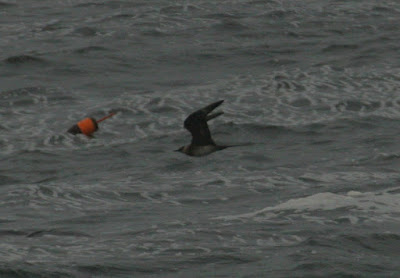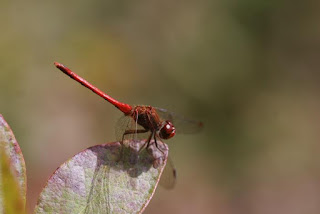And we were not disappointed! The five birds put on a phenomenal show for the half hour we were there. We also met a couple other birders - nice guys, as usual - which is always a good thing.
Because Jimmy has a real job, I dropped him off in Providence and hit a few spots in northern RI by myself. The unquestionable highlight was the white Red-tailed Hawk in Lincoln (at Chase/Great/Butterfly Farm) who has been around longer than I have been birding - but I have seen him for the past 4 years. He was a bit distant, so I couldn't manage a better photo than this, but despite having seen him a few times, I have never gotten a picture of him before.
It seems that every year he has a different arrangement of colored feathers, I seem to remember seeing only a couple red tail feathers last time.
This guy is always worth waiting around for - though the park is a hellhole of dogs off leashes, poop, and owners who don't give a hoot that their dogs are disturbing you (and are not afraid to tell you off for yelling at their dogs...). It is hard to birdwatch here, but a great place for raptors, as well as sparrows on the border of the farm nearby - where I found this puzzling bird:
I knew immediately what it was - a Brown-headed Cowbird - but a few things were odd about this one. It was incredibly dark and the white throat was much better defined than I have seen on other individuals.
I then hit Lonsdale Marsh, where the only birds of note were the first two Yellow-rumped Warblers (aka "butterbutts"). While they will be very common in another month, these were the first of the year for me.
The Cumberland Monastery had a Black-throated Green Warbler and a Swamp Sparrow, and the reservoir complex was empty short of a few geese and gulls.




































